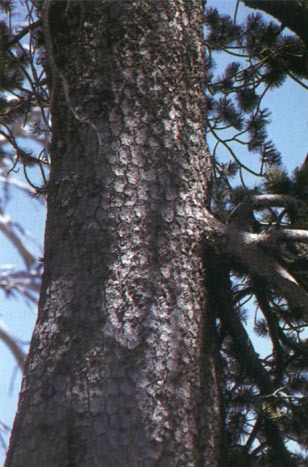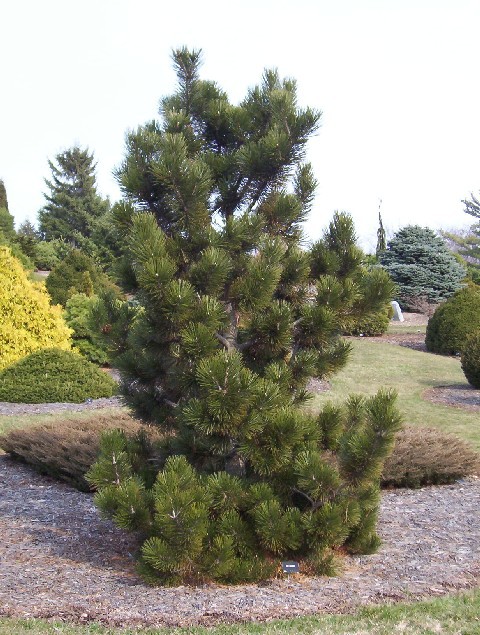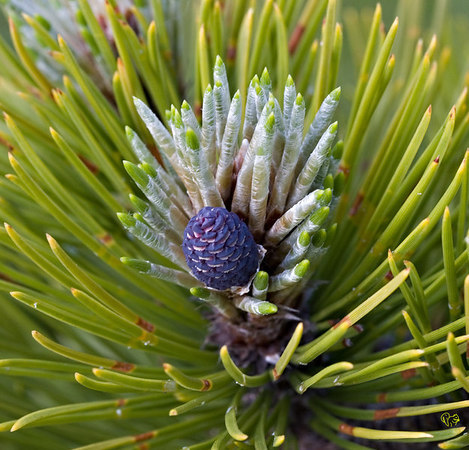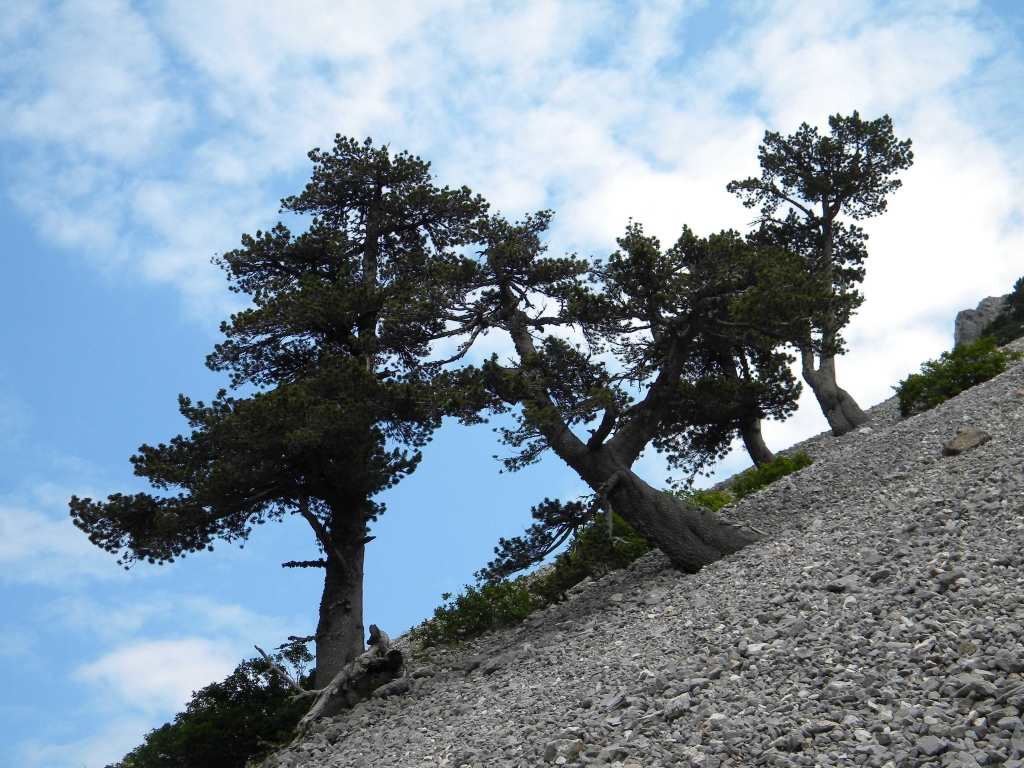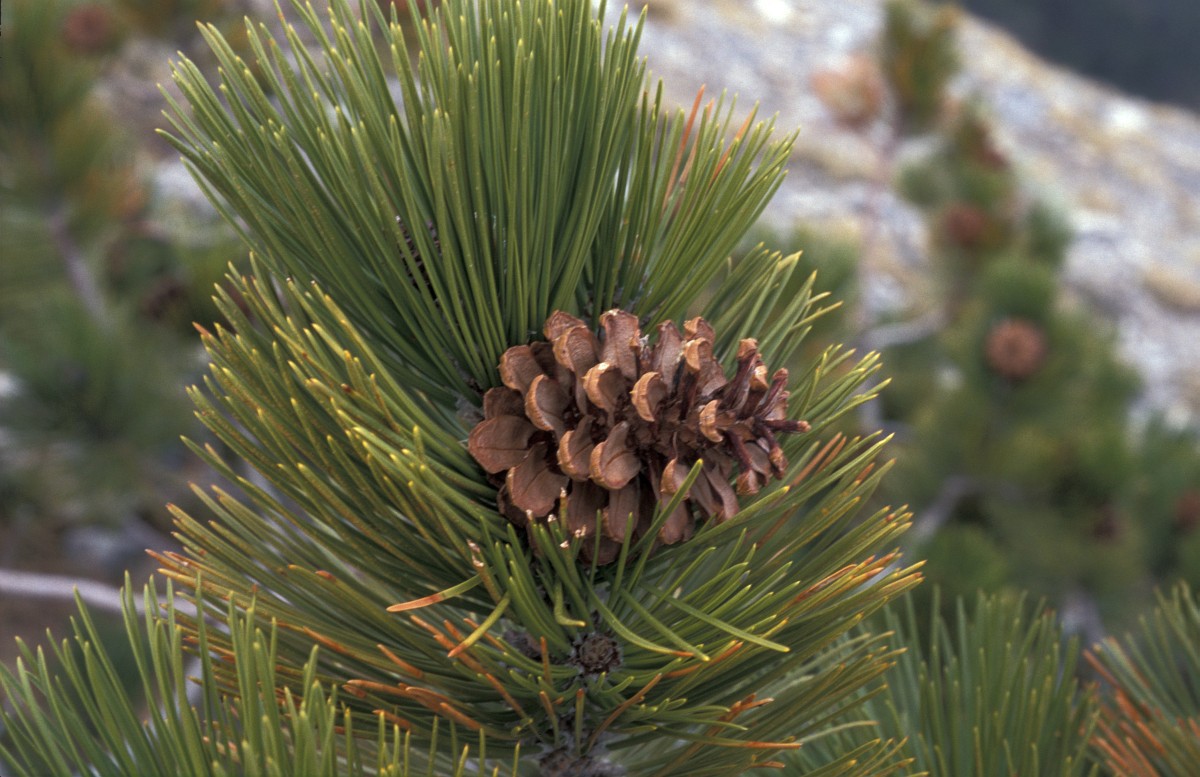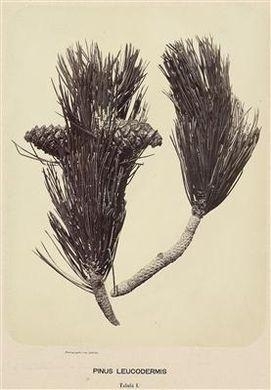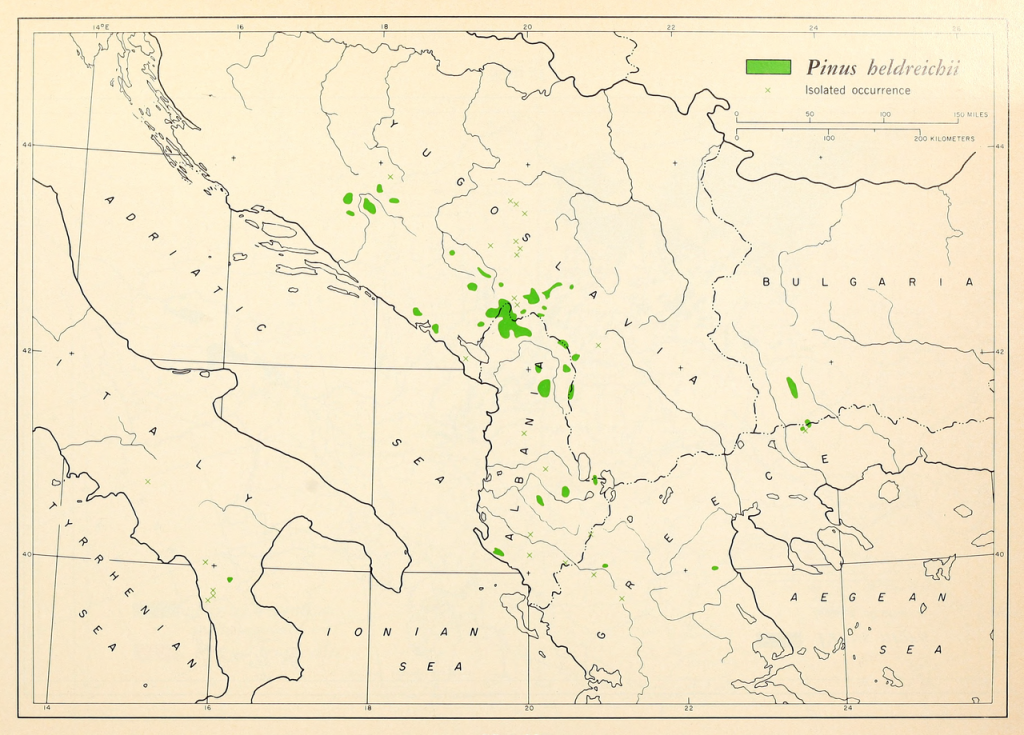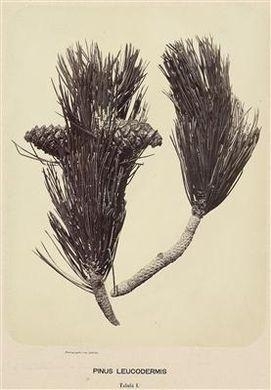
subgenus Pinus, section Pinus, subsection Pinaster (Mayr ex Koehne)
Pinus heldreichii, first described in 1863 by Konrad H. Christ (1833-1933), is commonly known as Bosnian pine or Heldreich's pine; other names include munika, or cherna mura (translating into black pine) in the Bulgarian and Serbian languages, Panzerkiefer in German; pin d'ecorce blanche in French; il pino loricato in Italian; and as robolo in Greek. The species name honors Theodor von Heldreich (1822 - 1902), a German-born botanist who spend most of his life in Greece and was director of the botanical garden and natural history museum in Athens. Heldreich first found it in the mountains of northern Greece on July 31, 1851.
Description. Bosnian pine is an evergreen, coniferous species of tree or shrub that grows to mature heights of 65 to 100 feet (20 - 35 m) with a trunk sometimes exceeding 80 inches (2 m) in diameter, measured at breast height, and a pyramidal to oval crown.
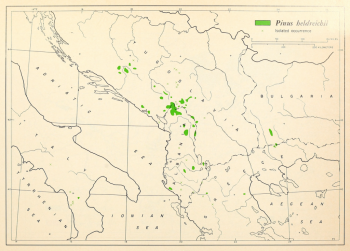
Distribution. This species is native to Albania, Bosnia, Bulgaria, Greece, Macedonia and Serbia.
The type variety is found in the western Balkan Peninsula, including Albania, Bulgaria, Greece and Yugoslavia, where is usually is found in mixed stands at elevations of 3.200 to 8,000 feet (1,000 - 2,500 m) above sea level, reaching the alpine timberline amidst Pinus mugo. Common associates include Pinus sylvestris, P. peuce and P. nigra. This conifer typically occur on soils derived from calcareous (limestone, dolomite) or occasionally ultramafic parent materials. Together with Pinus mugo and P. uncinata, P. heldreichii is one of the high-elevation pines of the Mediterranean basin.
Hardy to USDA Zone 5 - cold hardiness limit between -20° and -10°F (-28.8° and -23.3°C).

